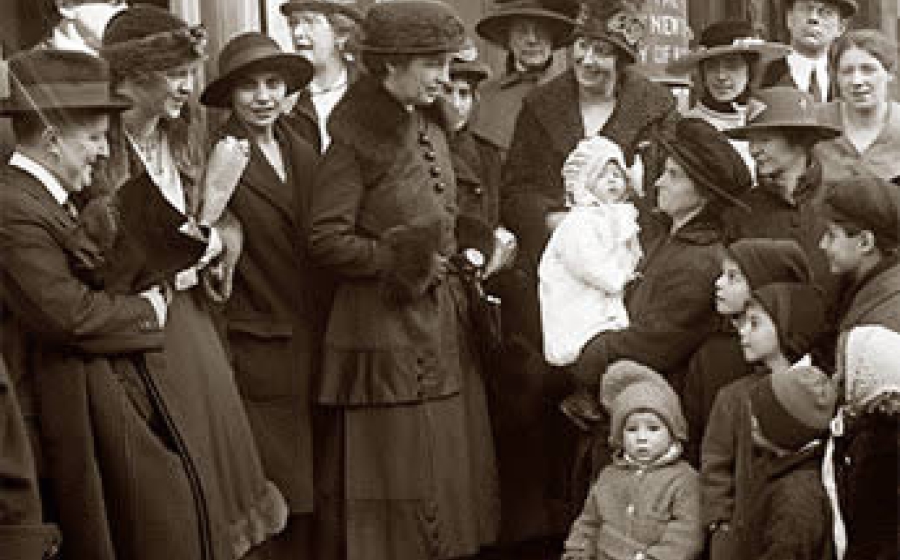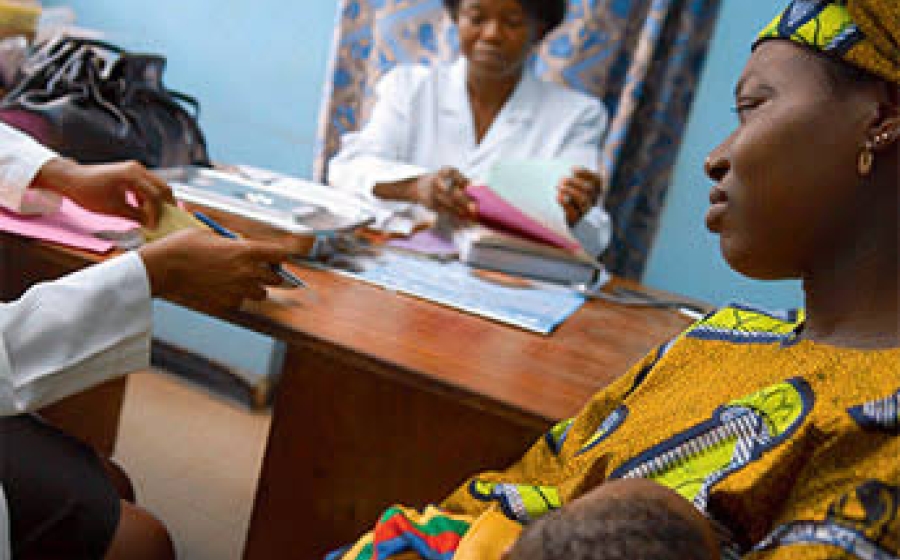People

“We are all brothers and sisters—Apaches, Navajos, Mexicans, blacks, whites—we’re all the same. We all bleed the same blood...We’re all one.”
Julian Goklish, 20, White Mountain Apache
Nothing better defines public health than the scale of its mission: protecting the health of populations.
Public health marshals research, education and evidence-based practice to improve well being of millions worldwide.
Public health's roots can be traced to the first efforts to accurately count the number of births, deaths and cases of illness. As vital statistics matured into the robust disciplines of biostatitics and demography, it became clear that "population health" and "individual health" were two sides of the same coin.
The last half-century has vividly demonstrated the health impacts of systemic societal changes like rapid urbanization, unsustainable population growth, climate change, migrations sparked by conflict, social inequities, aging populations and inadequate access to health care.
The challenge for public health researchers at the Bloomberg School and beyond is to recognize the specific needs of individuals even as they prescribe policies and interventions that can benefit entire populations.
Timeline
1927
1927
Biostatistician and biologist Raymond Pearl is one of the first scientists to begin criticizing eugenics, the “science” of racial improvement through selective breeding.
1932
1932
JHSPH and the Baltimore City Health Department establish the Eastern Health District to support innovative research among 110,000 inner city residents, later dubbed “the most studied people in the world” because of continued work in the community.
1952
1952
Virginia Apgar, MPH ’59, develops the Apgar Score, which is used to assess the status of infants immediately after delivery to identify those in cardiac or respiratory distress.
1964
1964
Paul A. Harper, MD, MPH ’47 convenes a USAID conference on international population control at JHSPH. Harper and Minoru Moramatsu edit the conference proceedings, published as the field’s first textbook, Population Dynamics.
1977
1977
W. Henry Mosley, MD, MPH ’65, chair of Population Dynamics, establishes the Matlab Family Planning/Health Services Project, which becomes the model for Bangladesh’s national family planning program, one of the world’s most successful national programs.
1999
1999
JHSPH receives an historic $20 million gift to found the Bill & Melinda Gates Institute for Population and Reproductive Health. Laurie Schwab Zabin, PHD ’79, a pioneering family planning researcher and advocate, is named the Institute’s first director.
Then & Now

Then: The Birth of Family Planning
IN THE MID-1920s, Johns Hopkins medical and public health faculty sought to help women whose health was impaired by frequent childbearing. Inspired by family planning pioneer Margaret Sanger’s efforts, they joined with Baltimore civic leaders to organize the Bureau for Contraceptive Advice, one of the first family planning clinics in the country. Within the first year, 86 physicians had referred 168 patients to the Bureau. Some patients were referred because of existing diseases, such as tuberculosis, while others had had multiple pregnancies that had resulted in anemia and other debilitating conditions.
In its first five years, the clinic helped more than 1,150 women—95 percent of whom had been fitted with diaphragms. About half the patients reported having had one or multiple abortions, which were illegal then—and risky. Half had borne more than 5 children, and some more than 20. After five years, 45 percent of the women had avoided pregnancy—a marked improvement over the patients’ own previous attempts at birth control, which had only a 15 percent success rate.
The Baltimore effort merged with other birth control groups in the U.S. to form Planned Parenthood in 1942. The initiative helped set an important precedent for the national and international movement that would dramatically transform women’s opportunities to plan and control their reproductive lives.

Now: The Global Approach
IN THE LAST HALF OF THE 20TH CENTURY, the widespread acceptance of family planning by individuals and countries significantly reduced maternal and infant mortality, birth rates— including adolescent birth rates—and unwanted pregnancies. The field received a significant boost in 1999 with the creation of the School’s Bill & Melinda Gates Institute for Population and Reproductive Health. The Gates Institute arose from faculty successes in reducing teen pregnancy and demonstrating that low- and middle-income nations could control population growth.
The Gates Institute supports research and strengthens programs in family planning and reproductive health. Its influence can be traced through education and training with academic partners, national leaders and young scholars. The Institute has ongoing collaborations with universities in Egypt, Ethiopia, Ghana, Malawi, Nigeria and Uganda. By working with these universities, it is helping develop leaders in country and increase institutional capacities.
Organized by the Gates Institute, the biannual International Conference on Family Planning—the largest conference of its kind—has been co-hosted by Indonesia, Uganda, Senegal and Ethiopia, attracting thousands of researchers, policymakers, students and NGO leaders. The Institute’s Advance Family Planning initiative works with locally based partners, including NGOs and government officials, to increase investment in access to high-quality, voluntary family planning through evidence-based advocacy.
A CLOSER LOOK

The World's Most Vulnerable
Nearly 60 million people worldwide are currently displaced or seeking asylum, creating the largest humanitarian crisis ever recorded. They include Syrians fleeing a relentless civil war, Iraqis forced from their homes by sectarian violence, Central American youth escaping poverty and brutality, and African families fleeing terrorist groups. Many find themselves living in makeshift camps with scant shelter, rampant disease and poor sanitation.
The School’s Center for Refugee and Disaster Response (CRDR) works to improve the lives of people displaced by conflicts and disasters by training leaders, conducting research and promoting best practices in preparedness and recovery. Its expertise extends to medical crises such as West Africa’s Ebola outbreak and to the needs of populations disrupted by typhoons and other natural disasters. For more than 20 years, CRDR faculty have taught the Health Emergencies in Large Populations (HELP) course, providing humanitarian workers intensive training in public health principles and disaster epidemiology so they can most effectively manage health crises in emergency settings.
CRDR researcher Shannon Doocy, PhD ’04, is working with humanitarian organizations in Syria to evaluate humanitarian needs and assistance programs. Doocy and colleagues have also surveyed Syrian refugees to gauge health status and service access, which has guided the health sector response. In food insecure, post-conflict and natural disaster settings, Doocy is evaluating interventions designed to improve child nutrition.
Display Credits
Main Illustration
- Noah Woods
Other Content
- Charts: SDYM
- White Mountain Apache Photo: Brad Armstrong
Then and Now
- Then: Margaret Sanger on Steps: Getty Images/Bettman
- Now: Family Planning Photo: Courtesy of Gates Institute for Population and Reproductive Health, JHSPH
A Closer Look
- Shannon Doocy: Chris Hartlove
